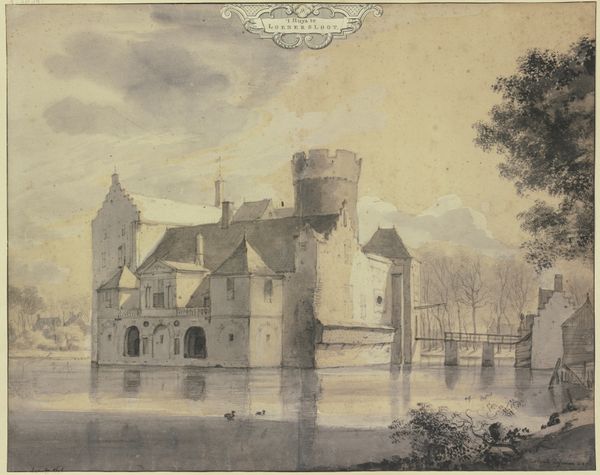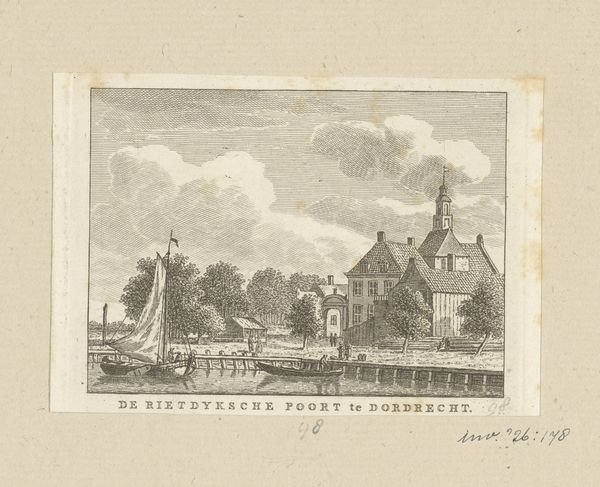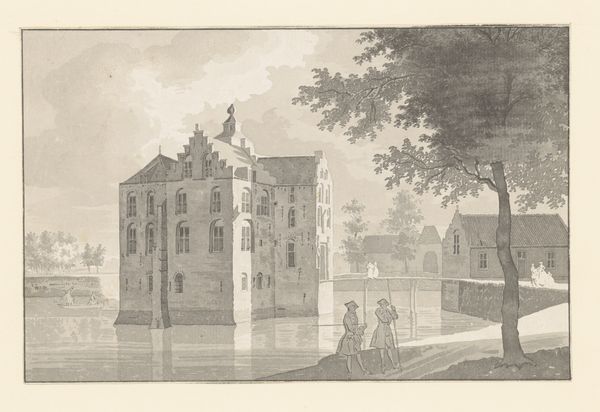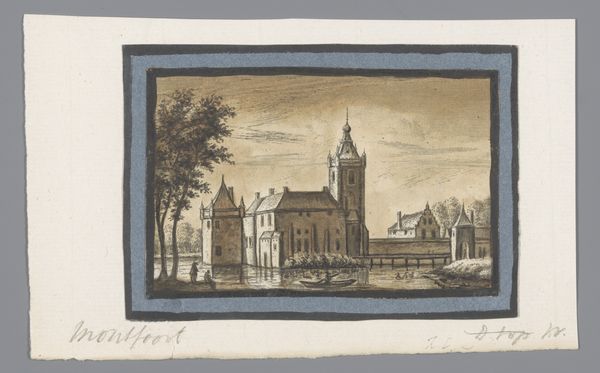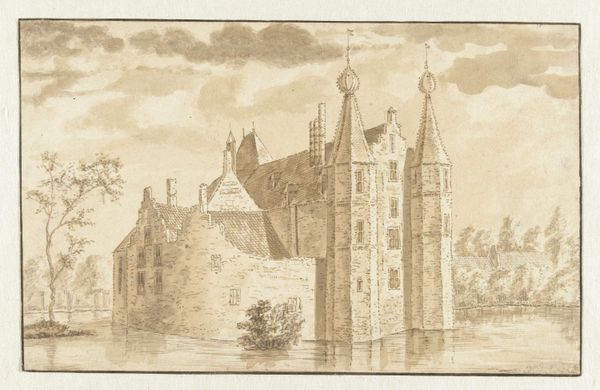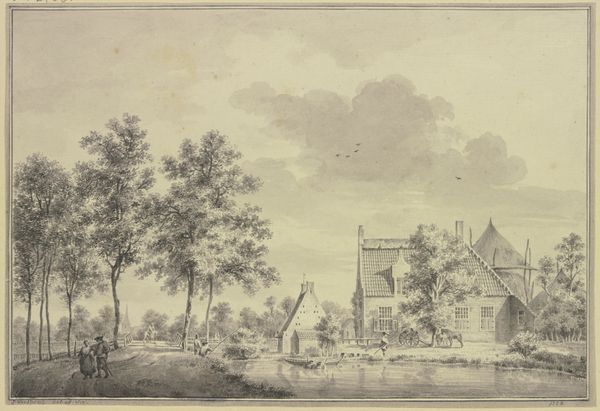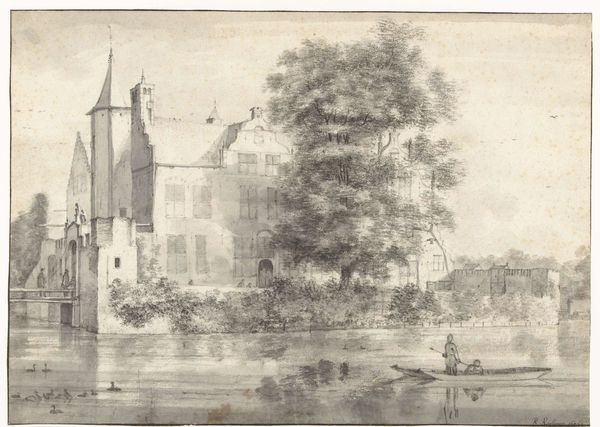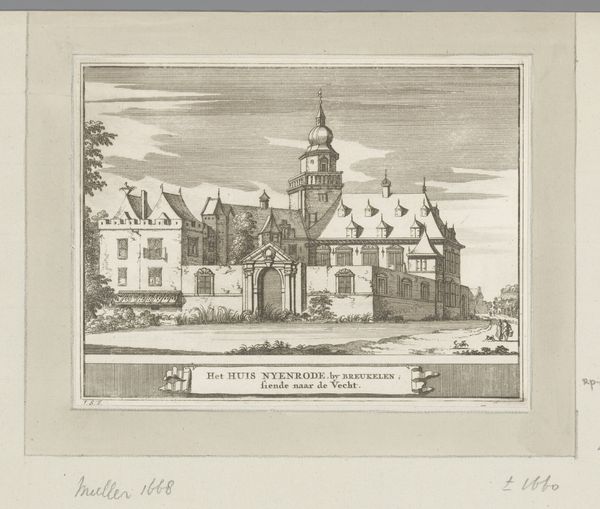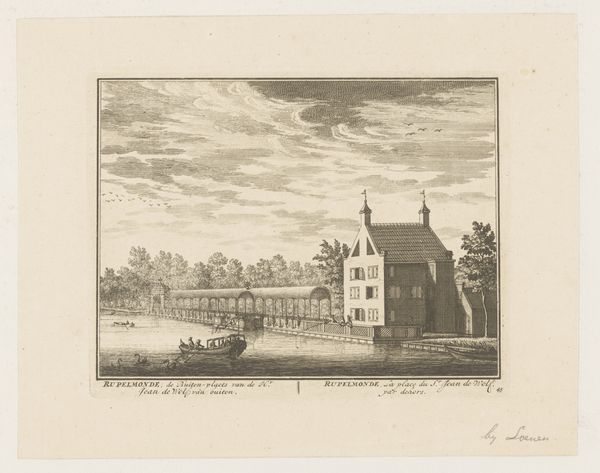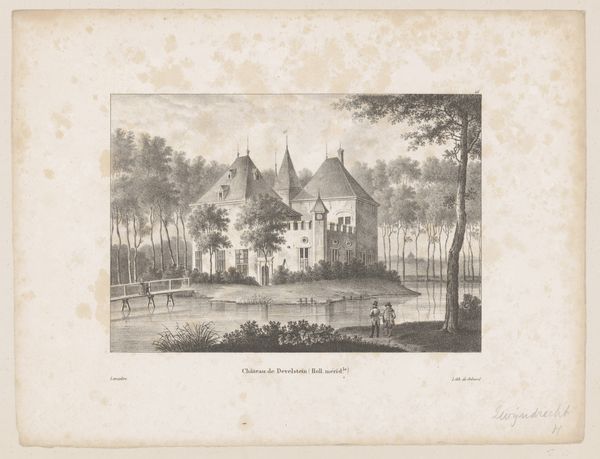
painting, watercolor
#
painting
#
landscape
#
watercolor
#
watercolour illustration
#
genre-painting
#
history-painting
Dimensions: height 85 mm, width 113 mm
Copyright: Rijks Museum: Open Domain
Curator: Jan de Beijer rendered this watercolor of Kasteel Bylandt in 1734. Editor: It has such a gentle melancholy about it, don’t you think? It feels like a memory fading at the edges, softened by time. Curator: Indeed. This piece allows us to examine landscape art in the context of Dutch history and its relation to ideas of nationhood and identity. Notice how the artist frames a scene of decaying aristocratic power in a society rapidly changing in terms of social and political dynamics. Editor: Decay...that’s definitely the right word. You can see it in the ruined part of the building; the muted palette definitely amplifies the sentiment. Even the way the island sits so calmly in the water; everything feels subdued, muted, like a collective sigh. I feel an undeniable sense of nostalgia observing it. It definitely provokes thoughts about what was lost and the inevitability of change. Curator: Absolutely, the deliberate depiction of decay invites a critical perspective. We should not romanticize decline, especially considering who benefited from and suffered under the Bylandt family's rule. Art like this can unveil socio-economic power structures and prompt discussions of injustice through its artistic representation. It speaks about power, class, and how the common folks may perceive a nobleman's misfortune. Editor: Right! While some may see a crumbling castle, others would simply notice two characters enjoying the calm water near this construction, probably thinking how peaceful is that water tour on such a calm afternoon... the power of perspective, uh? I wonder how the people felt at the time about castles decaying or new castles arising in other territories, were they judging, were they ignoring? Did this image even arise social debate? Fascinating, to say the least. Curator: Precisely. It urges a deconstruction of traditional narratives, positioning it within dialogues about privilege and resistance. Art’s role extends to examining historical and contemporary oppressions. Editor: It certainly sparks imagination. The image also opens conversations beyond its aesthetics. Thanks to art like this, we question. Curator: Indeed. Hopefully, that questioning fosters meaningful discussions that encourage social action. Editor: Definitely! On top of it all, a super chill conversation for us two! Thanks!
Comments
No comments
Be the first to comment and join the conversation on the ultimate creative platform.
